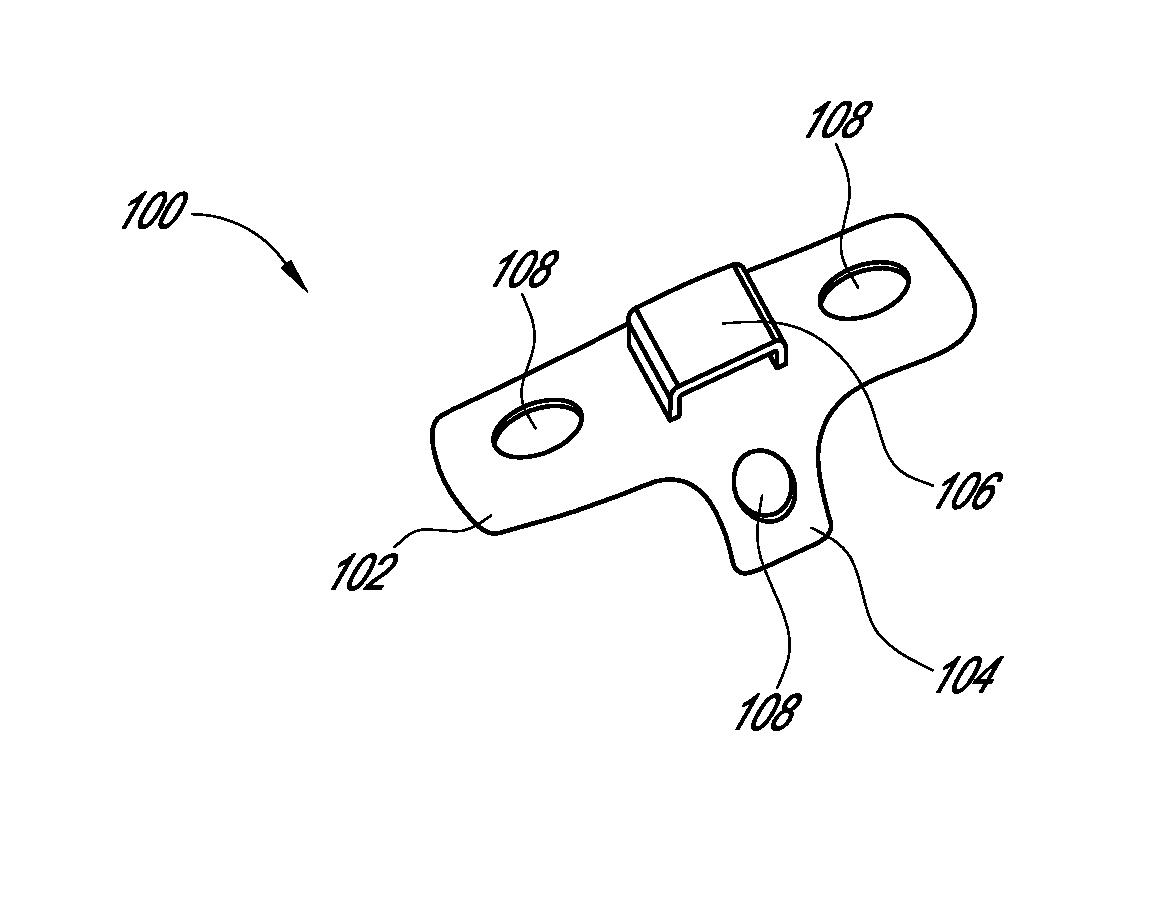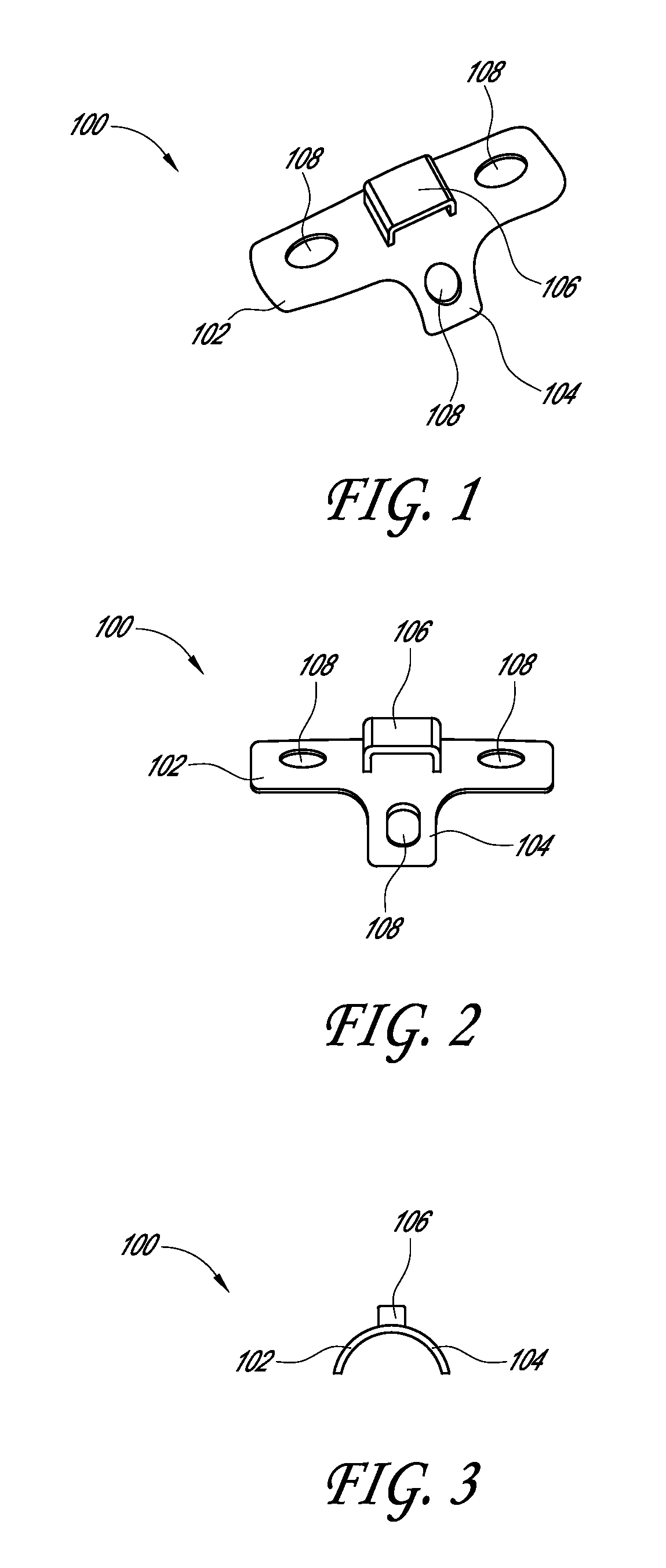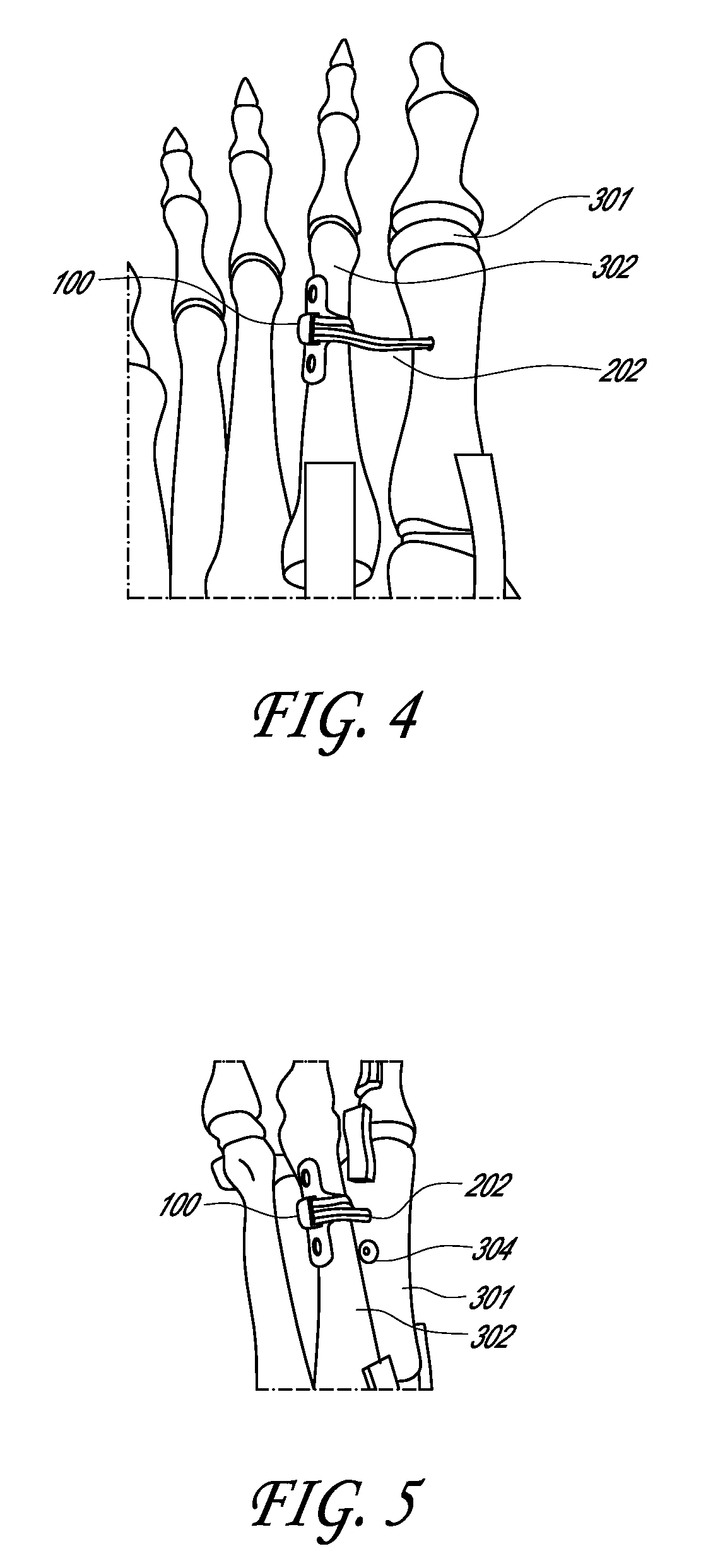Method and device for reducing angular bone deformity using a bone stabilization plate and cerclage material
a technology of angular bone deformation and bone stabilization plate, which is applied in the field of surgical implant devices for repairing angular bone deformation, can solve the problems of severe weakening of bone, difficult drilling of the centerline of the second metatarsal, and increased surgical difficulty, and achieve the effect of reducing the deformation
- Summary
- Abstract
- Description
- Claims
- Application Information
AI Technical Summary
Benefits of technology
Problems solved by technology
Method used
Image
Examples
Embodiment Construction
[0026]FIGS. 1-3 illustrate the current embodiment of the Winged Looped Plate 100 device to correct bone deformities, in particular metatarsus primus adductus, the underlying cause of hallux valgus / bunion deformities. The Winged Looped Plate 100 comprises a plate body 102 which is semi-tubular but can also be tubular, with buttress wings 104, a dorsal loop 106, and ingrowth holes 108. Depending on where the plate is to be used, the number of buttress wings 104, the number and shape of the dorsal loops 106, and size and number of holes 108 on the plate body can be customized. For example, several sets of buttress wings 104, dorsal loops 106, and ingrowth holes 108 can be arranged in series along a plate body for use in longer bones when a series of circlage ties are needed. (FIG. 10). The plate body 102 is semi-tubular in shape with a convex outer surface and concave inner surface to distribute forces of the suture tape evenly and avoid the need to drill a hole through the bone. The p...
PUM
 Login to View More
Login to View More Abstract
Description
Claims
Application Information
 Login to View More
Login to View More - R&D
- Intellectual Property
- Life Sciences
- Materials
- Tech Scout
- Unparalleled Data Quality
- Higher Quality Content
- 60% Fewer Hallucinations
Browse by: Latest US Patents, China's latest patents, Technical Efficacy Thesaurus, Application Domain, Technology Topic, Popular Technical Reports.
© 2025 PatSnap. All rights reserved.Legal|Privacy policy|Modern Slavery Act Transparency Statement|Sitemap|About US| Contact US: help@patsnap.com



